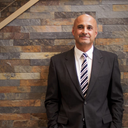ALSO during the process of removing the scars, would this include scar tissue around the areolas?
Answers (9)
From board-certified doctors and trusted medical professionals
Dr. Lisa Lynn Sowder, MD (retired) - Account Suspended
Board Certified Plastic Surgeon
Answer
Dr. Richard P. Rand, MD, FACS (retired)
Board Certified Plastic Surgeon
Answer
More Scar Removal Questions
See all Scar Removal Q&AWE SEND PRETTY
EMAILS
What’s trending? Who’s turning heads? Which TikTok myths need busting? We’ve got you. No fluff, no gatekeeping—just real talk. Get our free, unfiltered newsletter.




